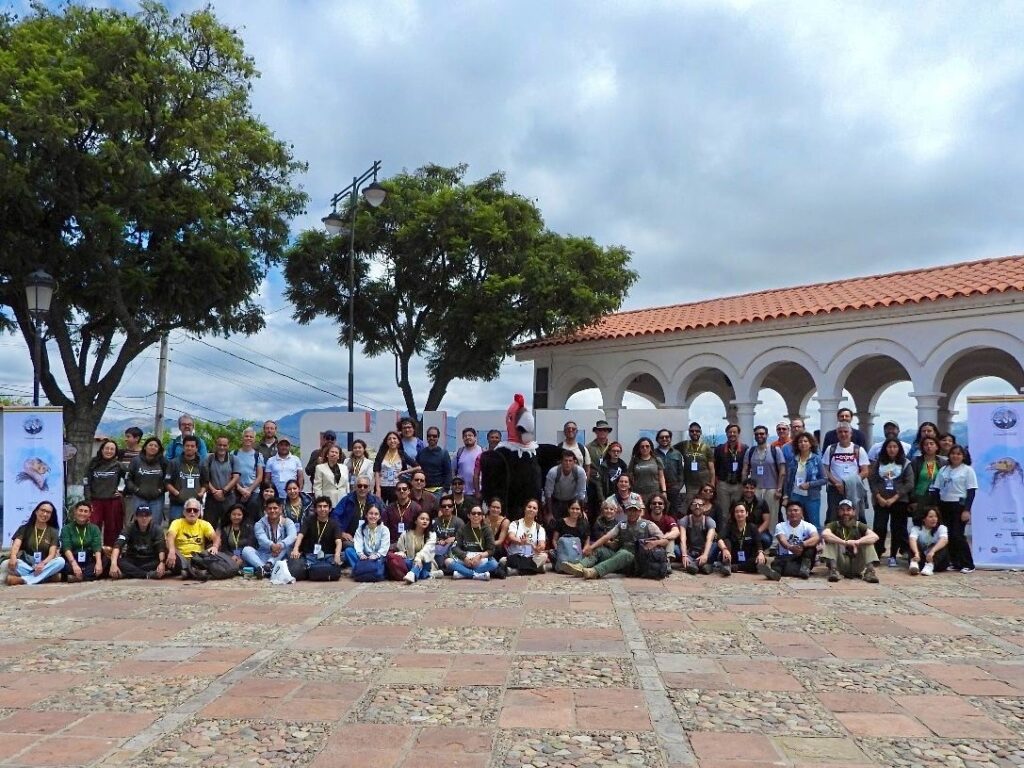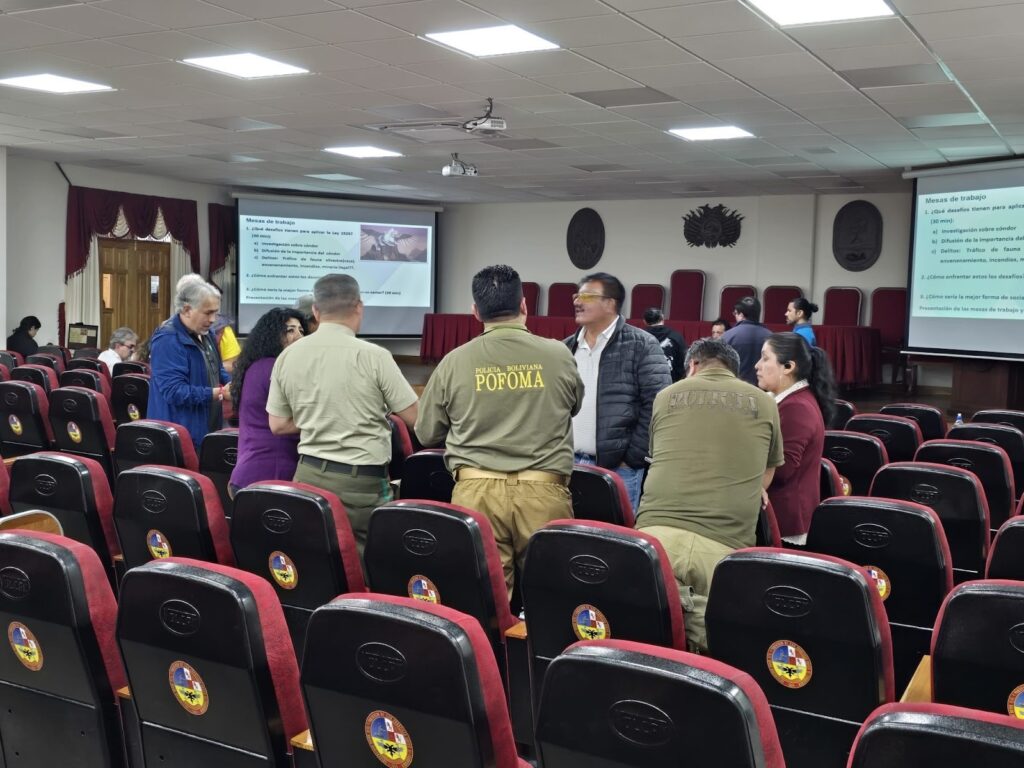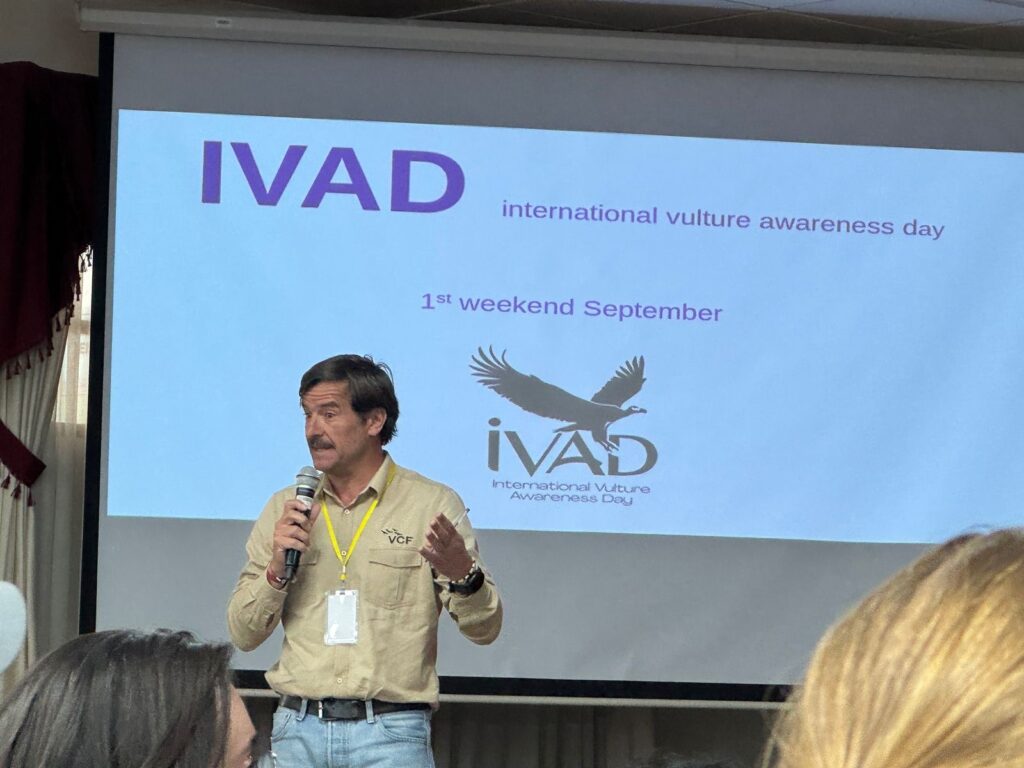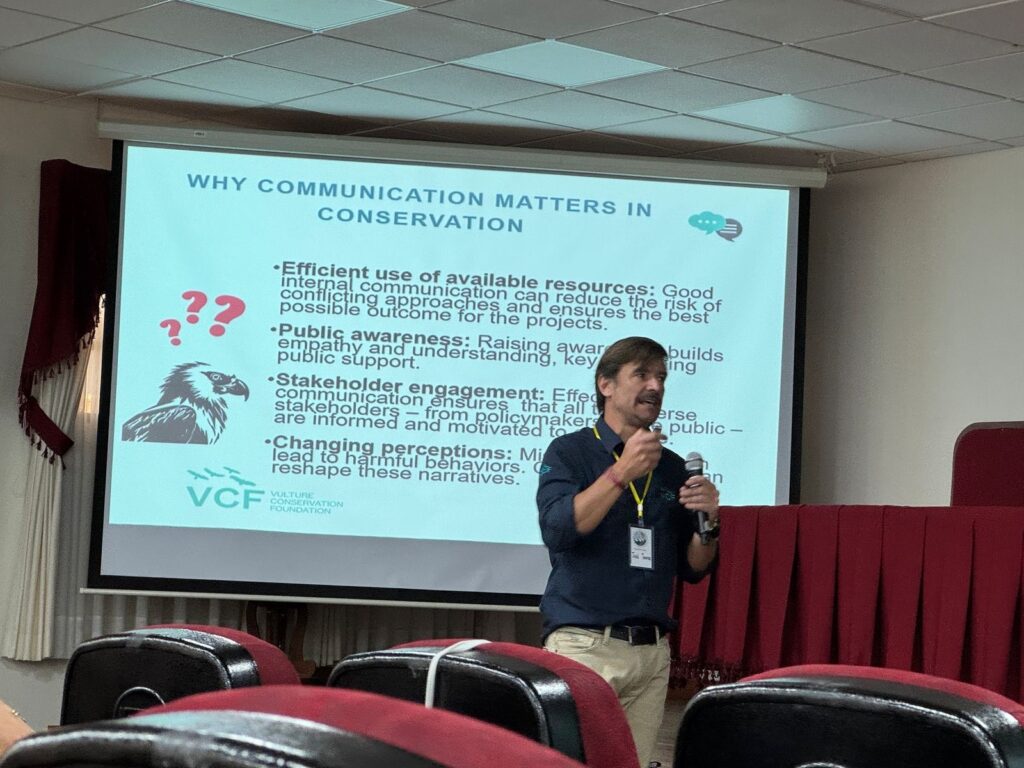Different continent and different species, but the threats, tools, challenges and processes are very much the same we work with in Europe. Lots to exchange, share and learn!
From 17-21 March 2025, the 5th Andean Condor Conference and the 1st Symposium on Vultures of the Americas brought together in Sucre, in the heart of the Bolivian Andes, experts from across the Americas and also further afield to discuss pressing conservation issues affecting New World Vultures. The Vulture Conservation Foundation’s (VCF) Director, José Tavares, attended the event, presented several key topics and shared his key takeaways.

A deep dive into Andean Condor conservation
The Andean Condor (Vultur gryphus), listed as Vulnerable globally, faces significant conservation challenges. With an estimated global population of 6,700 individuals, its numbers are highest in the southern Andes (Argentina and Chile), while populations further north remain more fragmented and poorly studied. The species has a slow reproductive rate; condors bred only once every two years, and juveniles remain dependent on their parents for up to 1.5 years.
The conference showcased all the great monitoring and conservation work being done on this species across the range, with Argentina and Ecuador perhaps showcasing the most comprehensive strategies and programmes with the species. In Argentina, Fundación Andina focuses on condor rehabilitation and releases, while some research groups. advanced important and significant studies on Andean condor genetics and ecology. Sergio Lambertucci’s team for example has identified genetic markers for Andean condor population connectivity and even potential genetic adaptation to altitude and resistance to poisoning—an approach that could inform Bearded Vulture conservation in Europe.
However, in countries such as Bolivia, Peru, and Colombia, significant knowledge gaps remained regarding Andean condor populations and conservation needs. The conference also featured researchers from Venezuela, Brazil, Chile and Mexico working on other New World vultures, such as the American Black Vulture, King Vulture and Turkey Vulture, and also Mexican and American conservationists working on the California Condor.
Key conservation issues

Several crucial issues emerged from the discussions:
- There is great work ongoing across the region, often done in very difficult circumstances: lack of funding, political and social instability, etc. Our South American colleagues are truly a dedicated, committed and capable group doing wonders with the limited resources.
- Poisoning remains the top cause of mortality for Andean Condors: As in Europe, poison baits targeting predators have devastating consequences for Andean Condors. The Wildlife Crime Academy (WCA) initiative presented at the conference was well received, with strong interest in adapting it for South America. Some countries, such as Argentina and Bolivia, have already taken steps to combat poisoning, but knowledge and enforcement gaps persisted.
- Data sharing: Many researchers tracked Andean condors using GPS tags, yet no comprehensive collaborative movement data analysis has been undertaken. Similarly, there was no common mortality database, nor a common monitoring strategy, aligning national populational census. These conferences are a great step towards a more comprehensive regional conservation programme, but more collaboration, data sharing and
- Electrocution is recognised as major threat in some countries: Unlike in Europe, electrocution was not highlighted as a major threat in some areas. However there are many cases of condors colliding or electrocuted for instance in Perú and Argentina. The lack of recognition in some areas i may be due to underestimated threats that needs to be evaluated and investigated.
- Localized wind farm impact—for now: While wind farms threatened vultures in Europe, South America currently has relatively few installations. However, Chile and Argentina were seeing increasing development, including several birds killed in Chile, warranting future monitoring. This will need to be tackled now.
- Uncoordinated captive-breeding efforts: While many countries had captive-breeding programmes for the Andean condor, these efforts lacked international coordination, prioritization, and standardized protocols.
Strategic contributions and next steps
José Tavares emphasized the importance of collaboration in conservation strategies. “The Wildlife Crime Academy model could be a game-changer in tackling poisoning,” he noted, underscoring the potential for collaboration.
VCF also supported efforts to develop a New World Vulture Multi-species Action Plan (MsAP), working with the Convention on Migratory Species (CMS).
The International Vulture Awareness Day was also promoted to South American stakeholders, while the relevance of the IUCN´s Vulture Specialist Group was also discussed and introduced. We hope to see more IVAD´s events this year, as well as more South American members in the IUCN VSG soon!


Lessons from the California Condor Programme
The symposium also provided insights from the California Condor recovery programme. Lead poisoning remains the species’ most significant threat despite existing lead ammunition bans. Interestingly, predation by coyotes was the second leading cause of mortality, mirroring issues seen in Bulgaria with golden jackals preying on young Cinereous Vultures reintroduced there. A successful mitigation strategy involved close movement monitoring; if a newly released condor was found roosting on the ground in the afternoon, teams intervened to encourage it to seek safer roosting spots.
Moving Forward
The conference underscored the need for improved international cooperation in vulture conservation. By sharing expertise, aligning strategies, and fostering collaboration, conservationists could better protect Andean condors and other vulture species across the Americas. VCF remains committed to fostering these connections, support the development of the New World Vulture MsAP, and explore further the possibility to adapt the WildLife Crime Academy to South America.
The participants in the conference have also produced a statement from the floor of the conference, with the main priorities for the conservation of the Andean Condor, that you can find here: Manifiesto Internacional Cóndor Andino 2025 – Fundación Cóndor